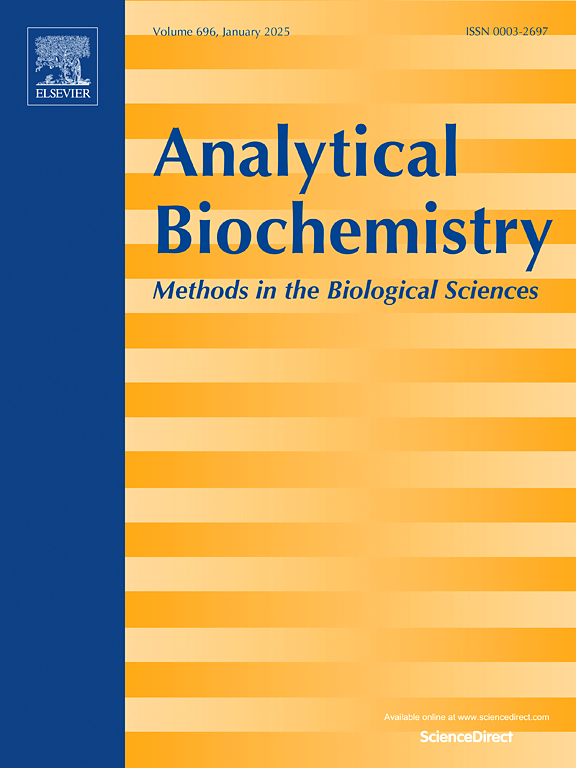Ultrasensitive detection of epinephrine by a Cd@HMCNs-based electrochemiluminescent sensor
IF 2.5
4区 生物学
Q2 BIOCHEMICAL RESEARCH METHODS
引用次数: 0
Abstract
Epinephrine (EP), a vital hormone and neurotransmitter, is central to the body's fight-or-flight mechanism, boosting physical strength, mental focus, and reaction speed in high-stress scenarios. Measuring EP levels is key for analyzing stress reactions, identifying health disorders, and maintaining balanced physiological performance. In this work, we successfully synthesized cadmium-doped hollow mesoporous g-C3N4 spheres (Cd@HMCNs) with a high surface area and high porosity. An electrochemiluminescent (ECL) sensor for EP detection was developed since EP can effectively suppresses the ECL emission of the Cd@HMCNs/K2S2O8 system. The sensor successfully detected EP within the concentration range of 5.0 × 10−10 mol L−1 to 1.0 × 10−5 mol L−1, with a detection limit as low as 1.67 × 10−10 mol L−1. When applied to pharmaceutical sample testing, the proposed biosensor yielded reliable and satisfactory results.

Cd@HMCNs-based电化学发光传感器对肾上腺素的超灵敏检测
肾上腺素(EP)是一种重要的激素和神经递质,是身体“战斗或逃跑”机制的核心,在高压力情况下增强体力、精神集中和反应速度。测量EP水平是分析应激反应、识别健康障碍和维持平衡生理表现的关键。在这项工作中,我们成功地合成了具有高表面积和高孔隙率的掺镉中空介孔g-C3N4球(Cd@HMCNs)。由于EP能有效抑制Cd@HMCNs/K2S2O8体系的ECL发射,研制了一种用于EP检测的电化学发光(ECL)传感器。该传感器成功检测到EP浓度范围为5.0 × 10−10 mol L−1 ~ 1.0 × 10−5 mol L−1,检测限低至1.67 × 10−10 mol L−1。将该传感器应用于药品样品检测,结果可靠,令人满意。
本文章由计算机程序翻译,如有差异,请以英文原文为准。
求助全文
约1分钟内获得全文
求助全文
来源期刊

Analytical biochemistry
生物-分析化学
CiteScore
5.70
自引率
0.00%
发文量
283
审稿时长
44 days
期刊介绍:
The journal''s title Analytical Biochemistry: Methods in the Biological Sciences declares its broad scope: methods for the basic biological sciences that include biochemistry, molecular genetics, cell biology, proteomics, immunology, bioinformatics and wherever the frontiers of research take the field.
The emphasis is on methods from the strictly analytical to the more preparative that would include novel approaches to protein purification as well as improvements in cell and organ culture. The actual techniques are equally inclusive ranging from aptamers to zymology.
The journal has been particularly active in:
-Analytical techniques for biological molecules-
Aptamer selection and utilization-
Biosensors-
Chromatography-
Cloning, sequencing and mutagenesis-
Electrochemical methods-
Electrophoresis-
Enzyme characterization methods-
Immunological approaches-
Mass spectrometry of proteins and nucleic acids-
Metabolomics-
Nano level techniques-
Optical spectroscopy in all its forms.
The journal is reluctant to include most drug and strictly clinical studies as there are more suitable publication platforms for these types of papers.
 求助内容:
求助内容: 应助结果提醒方式:
应助结果提醒方式:


